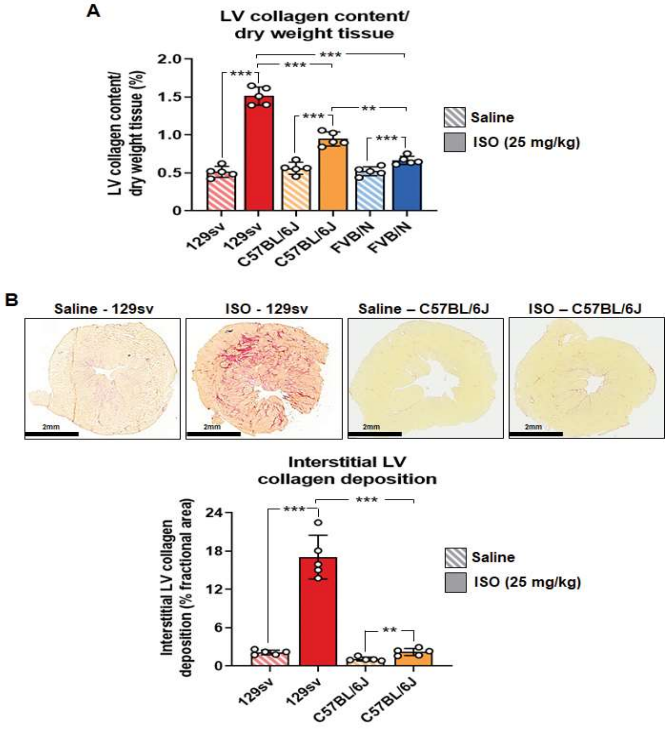Found 1 results
Article
17 October 2023The Severity of Isoproterenol-induced Myocardial Fibrosis and Related Dysfunction in Mice is Strain-dependent
The isoproterenol (or isoprenaline; ISO)-induced model of myocardial injury provides a non-surgical means of establishing features of dilated cardiomyopathy (DCM) in various species, including left ventricular (LV) inflammation, cardiomyocyte hypertrophy, vascular rarefaction, fibrosis and related dysfunction. However, when established in mice, the progression and severity of the LV fibrosis that manifests in this model can be affected by the exposure time and/or dosing of ISO applied, and by strain when an equivalent exposure time and dose are administered. In this study, we measured the severity of LV fibrosis by biochemical and histological means in 129sv, C57BL/6J and FVB/N mice exposed to repeated ISO (25 mg/kg for 5 days) administration at 14-days post-injury. At the time-point studied, these strains of mice underwent a ~2-fold, ~0.7-fold and ~0.3-fold increase in LV collagen concentration, respectively, compared to their saline-injected controls; whilst 129sv and C57BL/6J mice underwent a corresponding ~7-fold and ~1-fold increase in picrosirius red-stained interstitial LV collagen deposition, respectively. C57BL/6J mice subjected to higher dosing of ISO (50 or 100 mg/kg for 5 days) underwent a ~1.4–1.6-fold increase in picrosirius red-stained interstitial LV collagen deposition and some LV systolic dysfunction at day-14 post-injury, but the fibrosis in these mice was still less severe than that measured in 129sv mice given a lower dose of ISO. These findings highlight that strain-dependent differences in ISO-induced LV fibrosis severity can impact on evaluating pathological features of DCM and the therapeutic effects of anti-fibrotic drugs/strategies in this model.
